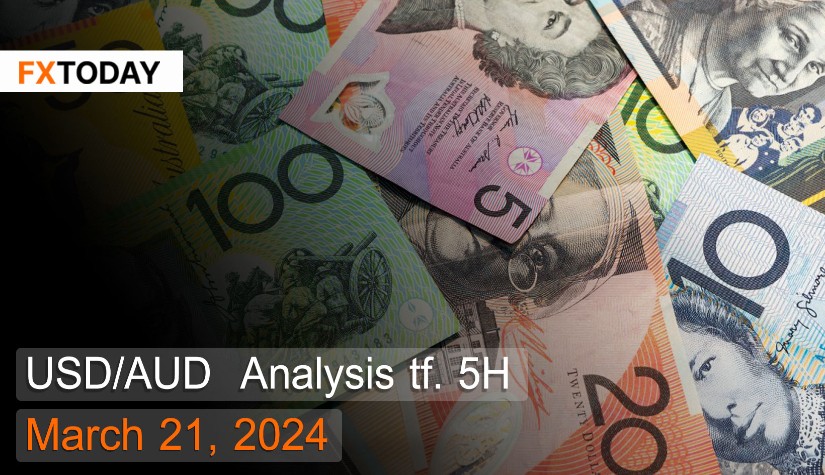The labor market in Australia remains robust.
The Australian dollar has appreciated rapidly, driven by stronger-than-expected data domestically. Furthermore, the recent FOMC meeting indicated a plan to cut interest rates three times this year and an additional three times in 2025, leading to a depreciation of the Australian dollar. The yield on Australian 10-year government bonds has risen to around 4.1%.
The Reserve Bank of Australia has kept the interest rate at 4.35% in its March meeting, in line with expectations. Amidst slowing economic growth after a cumulative 425 bps increase in interest rates over the past two years, inflation rates have been continuously decreasing. While the cost of services remains high, there are signs of a gradual slowdown.
Policy makers emphasize the utmost importance of bringing inflation back to the target range of 2-3% by 2024 and stress that the central bank will closely monitor global economic conditions, domestic demand trends, inflation, and the labor market.
Exports from Australia have increased by 1.6%, amounting to $47.51 billion, mainly driven by an increase in gold exports by 18.2%, reaching $3.45 billion. Most exports still go to the United States (up 11.3%) and Indonesia (up 6.6%), while exports to China decreased by 9.2%.
Australia's trade surplus increased to $11.03 billion in January from a revised $10.74 billion in the previous month, with exports growing faster than imports. Imports increased by 1.3% year-on-year to a three-month high of $36.43 billion, primarily driven by non-industrial equipment imports. Additionally, consumer goods purchases increased by 5.2% to $11.69 billion.
Australia's unemployment rate decreased to 3.7% in February, with the number of unemployed decreasing by 52,000 to 548,300, while employment increased by 116,500 to 14.27 million. Full-time employment increased by 78,200 to 9.82 million, and part-time employment increased by 38,300 to 4.44 million.
Techical analysis data (5H)
Resistance: 1.5176, 1.5201, 1.524
Source: Investing.com
Buy/Long 1: If the price touches support in the price range of 1.5073 - 1.5113 but cannot break the support at 1.5113, you may set a TP at approximately 1.5201 and SL at around 1.5049 or according to your acceptable risk.
Buy/Long 2: If the price breaks the resistance in the price range of 1.5176 - 1.5201, you may set a TP at approximately 1.524 and SL at around 1.5073 or according to your acceptable risk.
Sell/Short 1: If the price touches resistance in the price range of 1.5176 - 1.5201 but cannot break the resistance at 1.5176, you may set a TP at approximately 1.5073 and SL at around 1.524 or according to your acceptable risk.
Sell/Short 2: If the price breaks the support in the price range of 1.5073 - 1.5113, you may set a TP at approximately 1.5049 and SL at around 1.5201 or according to your acceptable risk.
Pivot point March 21, 2024 08:24 PM. GMT+7
|
Name
|
S3
|
S2
|
S1
|
Pivot Points
|
R1
|
R2
|
R3
|
| Classic | 1.5049 | 1.5073 | 1.5113 | 1.5137 | 1.5176 | 1.5201 | 1.524 |
| Fibonacci | 1.5073 | 1.5098 | 1.5113 | 1.5137 | 1.5161 | 1.5176 | 1.5201 |
| Camarilla | 1.5134 | 1.5139 | 1.5145 | 1.5137 | 1.5157 | 1.5163 | 1.5169 |
| Woodie's | 1.5055 | 1.5076 | 1.5119 | 1.514 | 1.5182 | 1.5204 | 1.5246 |
| DeMark's | - | - | 1.5125 | 1.5143 | 1.5188 | - | - |
















